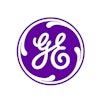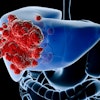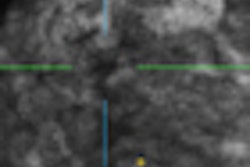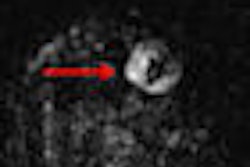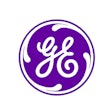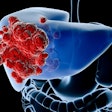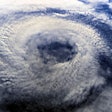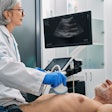Ultrasound developer U-Systems hopes Wednesday's meeting of the U.S. Food and Drug Administration's Radiological Devices Panel will be a big step forward in its bid to be the first vendor to receive approval to market an automated breast ultrasound (ABUS) system for screening applications in women with dense breasts.
The FDA panel will discuss, make recommendations, and vote on a premarket approval application (PMA) for U-Systems' somo.v system, which currently has 510(k) clearance for diagnostic use as an adjunct to mammograms. The expanded indication would aim to increase breast cancer detection in asymptomatic women (BI-RADS Assessment category 1 or 2) with dense breast parenchyma (BI-RADS Composition/Density 3 or 4) following a negative screening mammogram.
While recommendations from FDA advisory committees are not binding, the agency typically accepts them, and final clearance usually comes within three months after the panel's recommendations are received.
The additional clearance for somo.v would be a pivotal event for U-Systems and would mark the realization of the company's initial vision to apply its technology for screening purposes, said president and CEO Ron Ho. Somo.v has already received the European CE Mark and Canadian Health Ministry approval as an adjunct to mammography for breast cancer screening.
Of course, it would also make somo.v available to a much larger number of women in the U.S. than are available under its current indication as an adjunct to mammograms in diagnostic applications.
"There's 40 million women that come in for annual screening mammograms, so that's approximately 18 to 20 million women (with dense breasts) who would benefit from this technology," Ho said.
Pivotal study
At the panel meeting, U-Systems will be presenting results from its Pivotal Clinical Retrospective Reader Study 4 (CRRS-4), which compared the impact on reader performance from the combination of ABUS and screening mammogram with a screening mammogram alone in asymptomatic women with greater than 50% parenchymal density (BI-RADS Composition/Density 3 or 4) and a screening mammogram with a BI-RADS Assessment Category of 1 (negative) or 2 (normal with benign findings).
The study, which was led by principal investigator Maryellen Giger, PhD, of the University of Chicago, was a retrospective analysis of patient data that's being gathered for an ongoing prospective multicenter registry study. Two hundred breast screening cases, including both cancer and noncancer cases, were collected from 13 U.S. investigational sites.
Of the 200 cases, 164 were included in the primary analysis, while 36 supplemental and control cases were interspersed to ensure that the case mix was closer to that in clinical practice, according to a document submitted for the panel meeting by U-Systems. These additional cases, which were not included in the study analysis, were cases that were positive on mammography and were included to make sure readers were vigilant in their reading of the mammography studies.
Seventeen radiologists with experience in breast imaging interpretation participated in the retrospective study and read all 200 cases sequentially. They rated the cases after mammography alone and then again after reviewing the adjunctive ABUS image, if included. Receiver operating characteristic (ROC) analysis was performed on the likelihood of malignancy (LOM) ratings given by the readers to the 164 cases that were included in the study.
Better than mammo alone
The mean area-under-the-curve (AUC) for all readers was 0.604 (95% confidence index [CI]: 0.535, 0.672) for mammography alone; that number climbed to 0.747 (95% CI: 0.671, 0.822) when mammography was combined with ABUS. The AUC improvement of 0.143 (95% CI: 0.074, 0.212) reflected a 24% increase over mammography alone and was statistically significant (p < 0.001).
These additional cancer detections came at a drop of only 2 percentage points in specificity. Readers had an average specificity of 78% for mammography alone, compared with 76% for the combination of mammography and ABUS.
"The false-positive rate is very low compared to the sensitivity improvement," Ho said.
Meanwhile, the company's multicenter prospective study is still ongoing and should be completed by the end of 2012. Several abstracts from the ongoing multicenter prospective study will be presented at this year's RSNA meeting, Ho said.
"The results anecdotally are very strong and support the same thing that many papers have seen over the last decade: that combining ultrasound with mammography picks up substantially more cancers than mammography by itself," he said.
"We're not inventing a new modality here. All we're doing is taking the very effective modality of ultrasound and we're making it workflow-compliant so that the acquisition can happen very quickly, unlike a handheld transducer where the physician or a trained sonographer has to be there and actually interpreting as they're acquiring. So we're separating the acquisition process from the reading process and making both very quick."
Typical ABUS acquisition is 12 to 15 minutes for both breasts, while reading can be done in about three minutes, Ho said.
Individualized screening
The availability of ABUS technology for women with dense breasts would allow for tailored breast cancer screening for women and earlier detection of more curable breast cancers, said Dr. Rachel Brem of George Washington University who served as medical advisor for U-Systems' Pivotal study.
"Right now we really don't have a good solution for dense breasts where mammography is less effective and who have a higher risk by virtue of their breast density," Brem told AuntMinnie.com. "This is really an algorithmic shift in screening and allows for tailored or individualized screening based on a woman's individual risk by virtue of their breast density."
While there has been some concern in the past over an increased callback rate from ABUS, Brem noted that more women will have to be called back to detect more cancers.
She does think the technology will be embraced, however.
"It's painless, very cost-effective, and requires minimal physician time," she said. "There's no radiation and it's very safe, effective technology."

